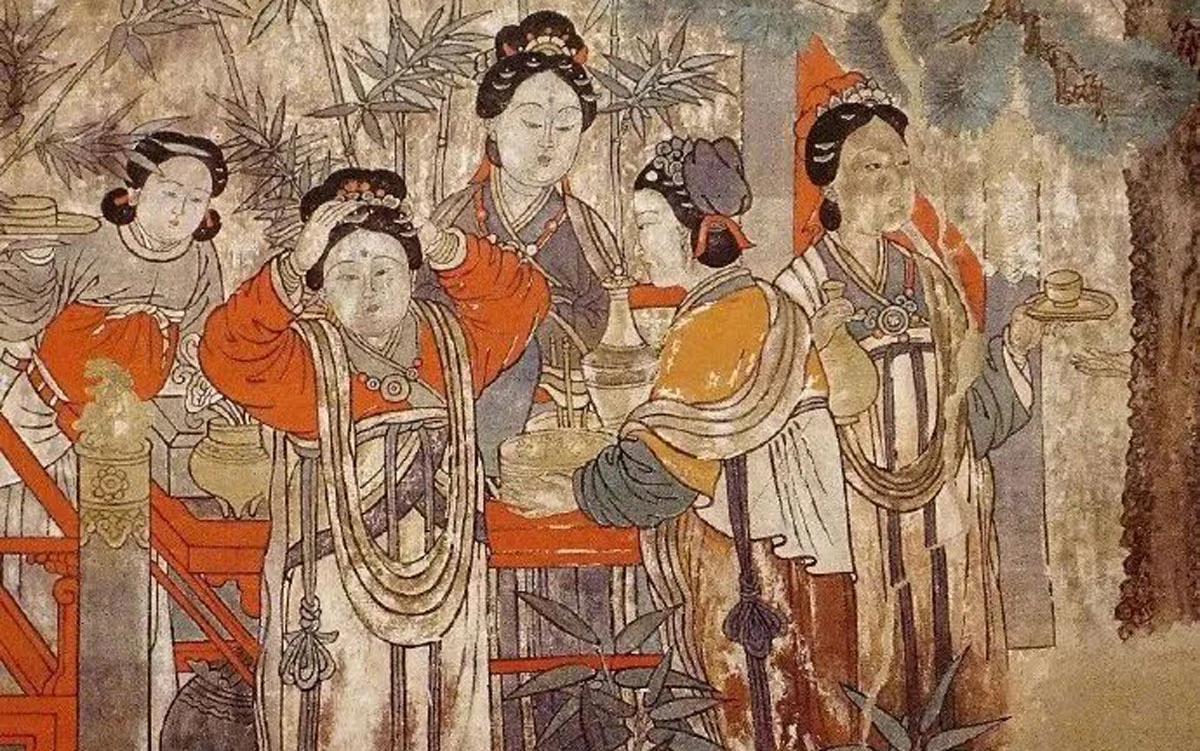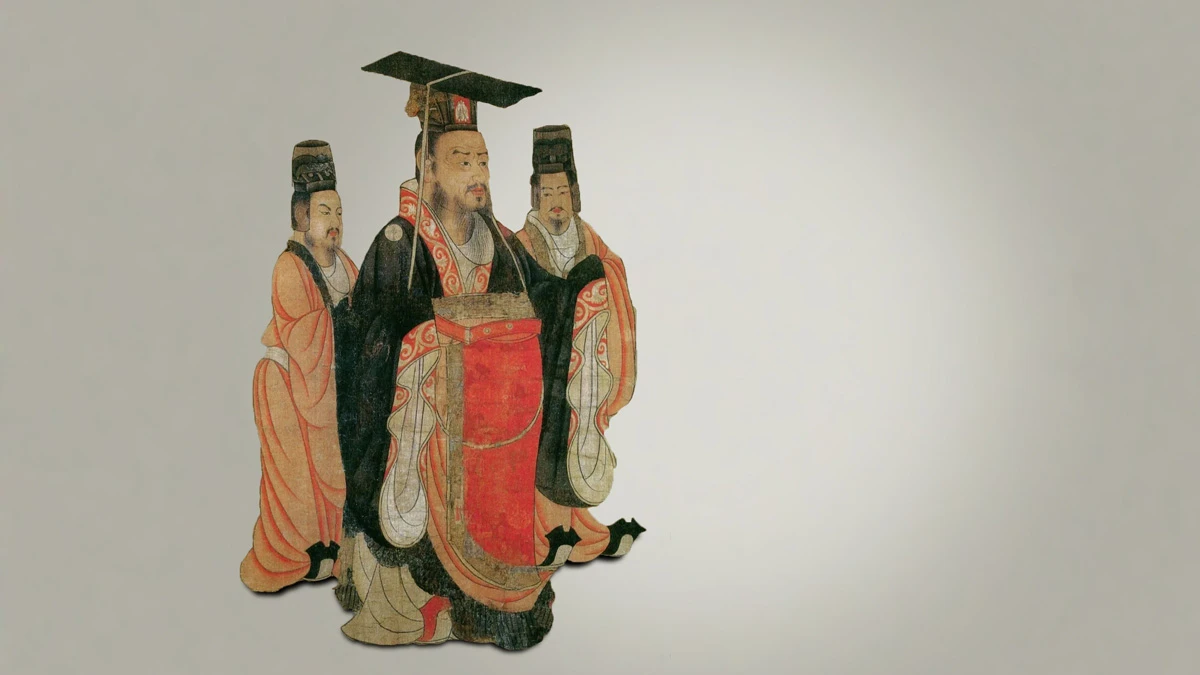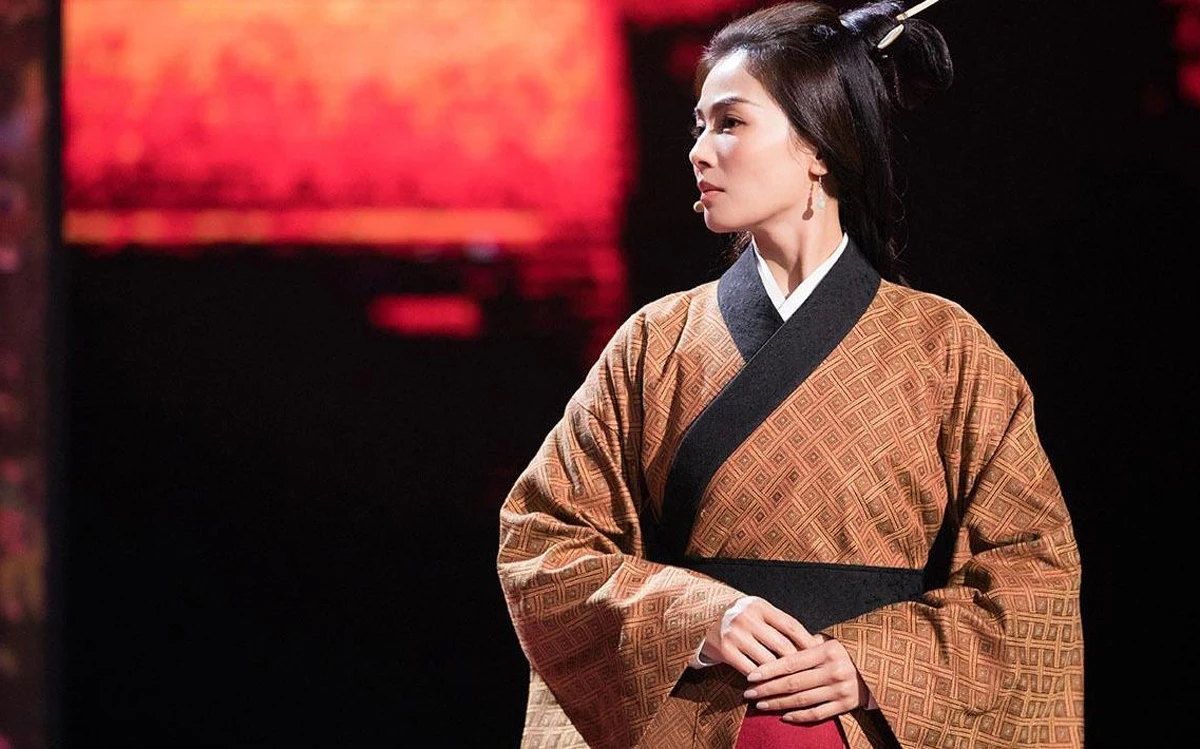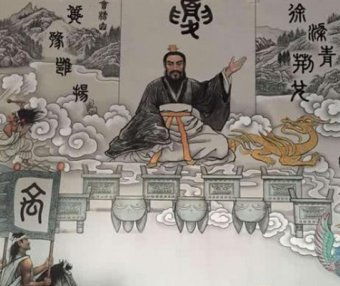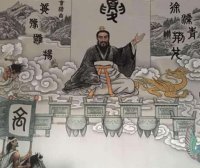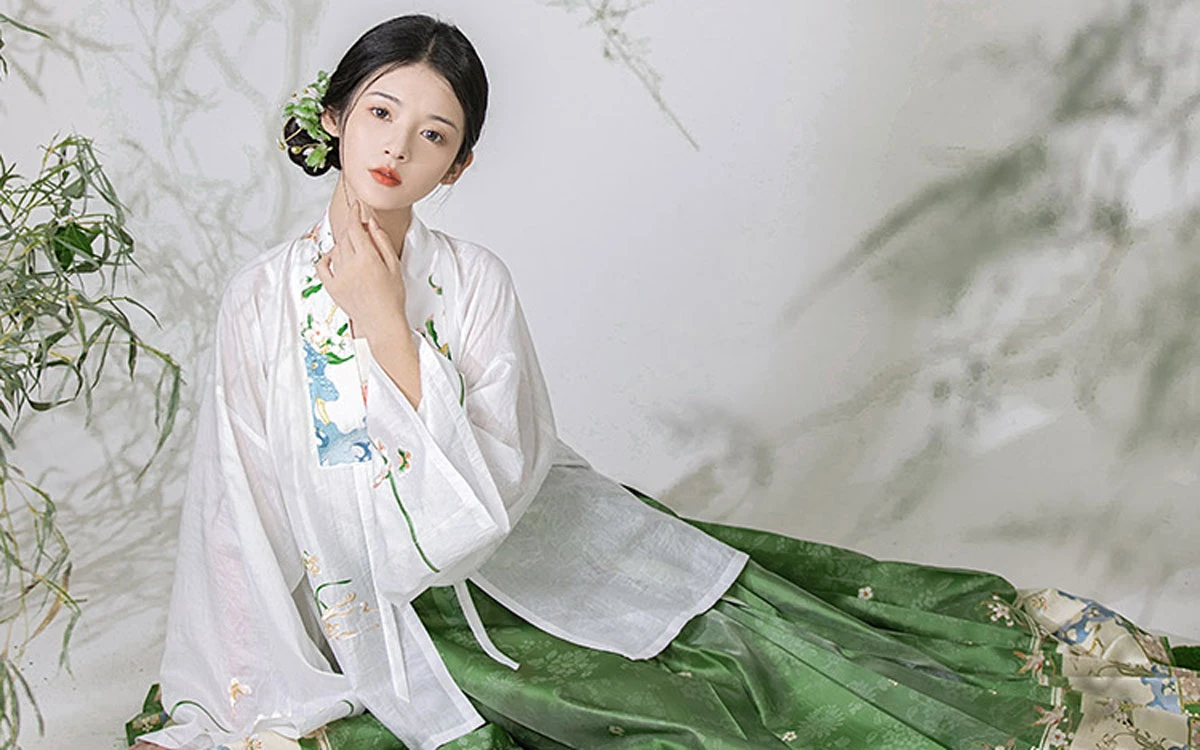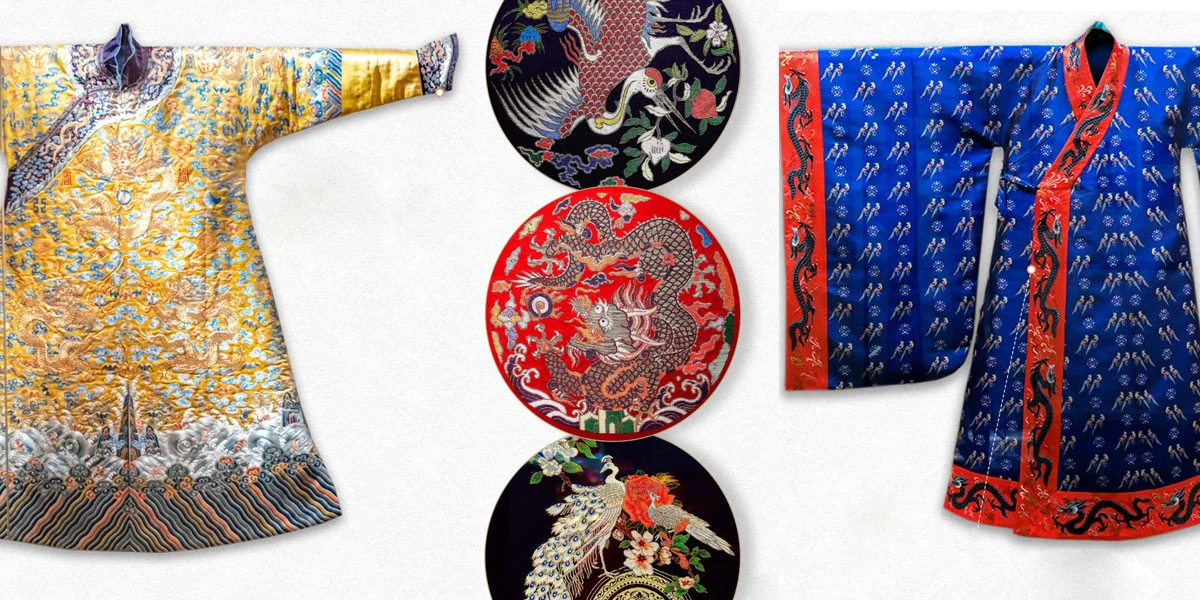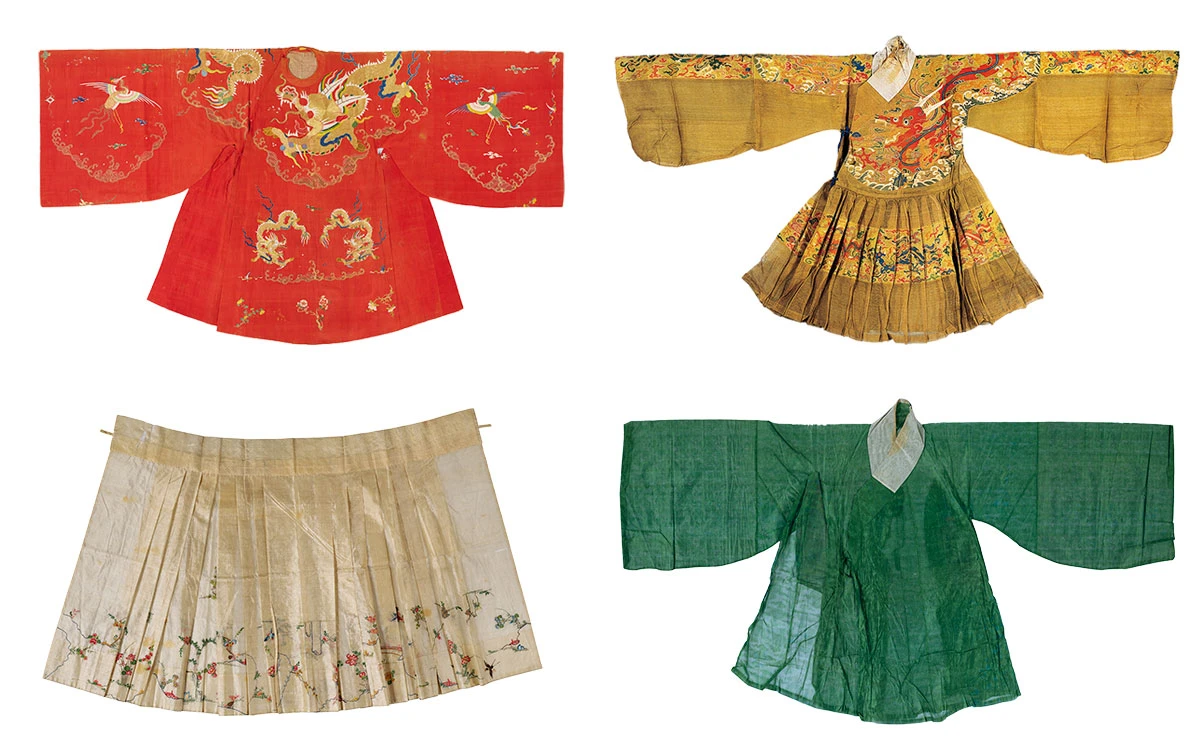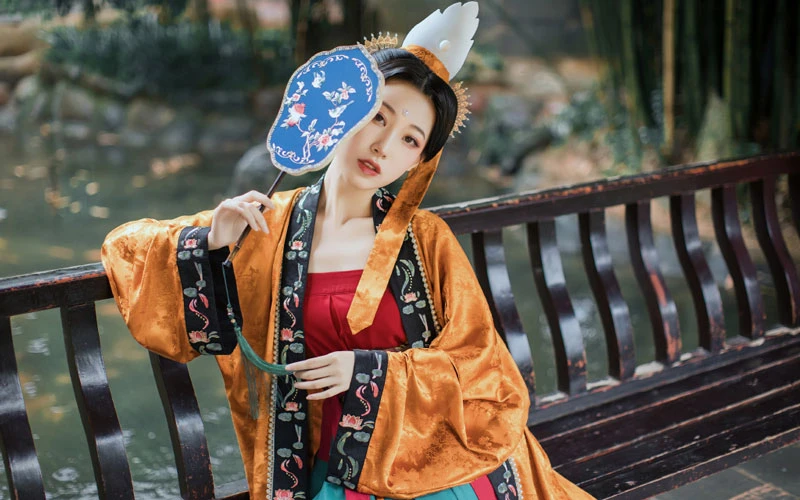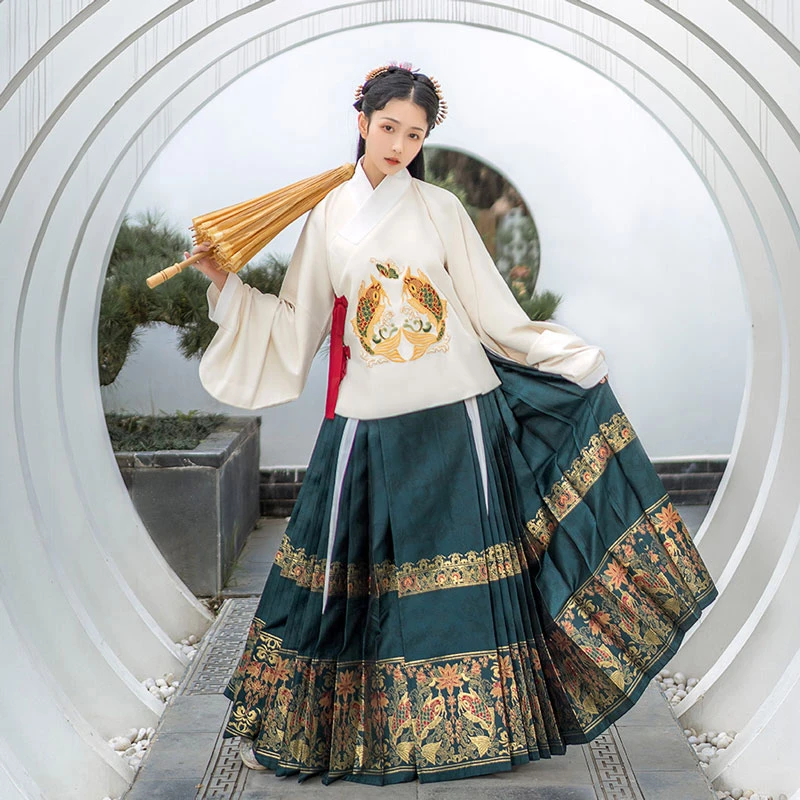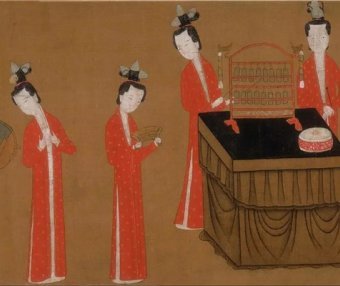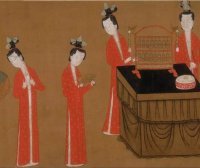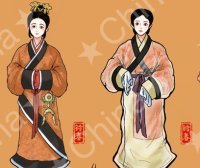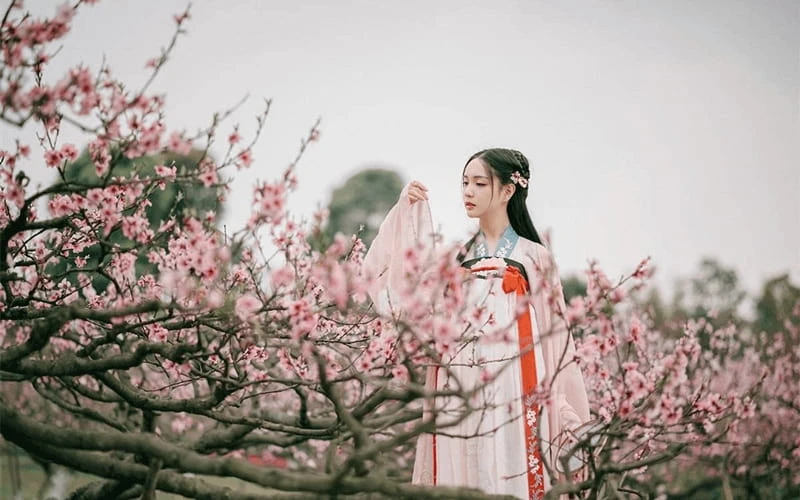
Hanfu in Different Dynasties
Hanfu in different Dynasties, including Han Dynasty Hanfu, Wei and Jin Dynasty Hanfu, Tang Dynasty Hanfu, Song Dynasty Hanfu, Ming Dynasty Hanfu, Qing Dynasty Costume.
Total 34 Articles
Topics: 2
-
How did the Hanfu change per dynasties?
The Hanfu worn in different dynasties, though similar, ranged in its own characteristics based on the dynasty. The article I am writing will hopefully help you understand the similarities and differences between clothing and hanfu throughout the timeline of dynasties. I will also show you how it has changed compared to modern hanfu. Xia (Hsia) Dynasty ca. 2100-1600 BCE Shang Dynasty ca. 1600-1050 BCE Zhou (Chou, pronounced "Joe") Dynasty 3.1 Western Zhou (ca. 1046-771 BCE) 3.2 Eastern Zhou (ca. 771-256 BCE) Spring and Autumn Period (770-ca 475 BCE) Confucius (ca. 551-479 BCE) Warring States Period (ca. 475-221 BCE) 221-206 BCE Qin (Ch'in, pronounced "chin") Dynasty/ Capital: Chang'an, present-day Xian Qin Shihuangdi dies, 210 BCE 206 BCE-220 CE Han Dynasty Western/Former Han (206 BCE-9 CE) Capital: Chang'an (present-day Xian) Confucianism officially established as basis for Chinese state by Han Wudi (r. 141-86 BCE) Eastern/Later Han (25-220 CE) Capital: Luoyang 220-589 CE Six Dynasties Period Three Kingdoms (220-265 CE) Jin Dynasty (265-420 CE) Period of the Northern and Southern Dynasties (386-589 CE) Period of disunity and instability following the fall of the Han; Buddhism introduced to China Cao Wei, Shu Han, Dong Wu 581-618 CE Sui (pronounced "sway") Dynasty Capital: Chang'an (present-day Xian)…... MariaB
MariaB- 323
- 1
-
Rediscovering the Yuan Dynasty Hanfu: A Journey Through Time
The revival of traditional clothing has become increasingly popular in recent years, with more people seeking to explore cultural heritage. Among the many aspects of Chinese culture enjoying renewed interest is the traditional dress known as hanfu. While the Tang and Ming dynasties' hanfu have been the most prevalent, but the hanfu of the Yuan Dynasty is also worth knowing. In this article, Hanfu Shidai will take us through the history of Hanfu during the Yuan Dynasty and examine its distinctive features. Firstly, prior to the Qing dynasty's implementation of the "shave hair and change clothes" policy, the traditional dress system of the Han people had been continuously inherited and developed without interruption. Although the Yuan dynasty was a period of Mongolian rule, the rulers at that time did not forcibly change the mainstream Han culture, and the Han clothing system naturally continued to be inherited. Secondly, the often mentioned "Tang-style", "Song-style", and "Ming-style" are modern-day conveniences adopted to associate with corresponding relics. They are also due to the long duration of these dynasties, which formed typical styles and designs. For example, during the Song dynasty, simplicity was valued, and the simple and elegant long Beizi became popular. In the…...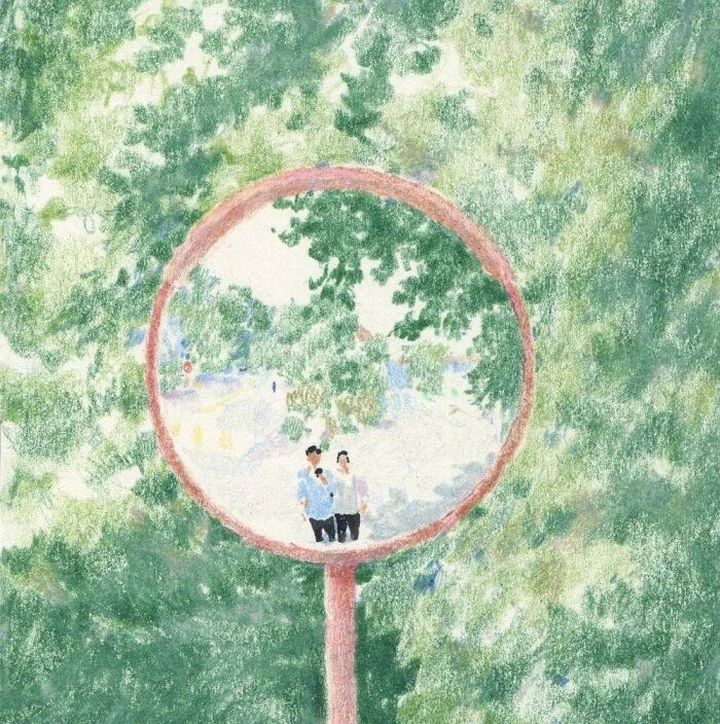 Jane
Jane- 2.7k
- 3
-
Elegance and Tradition: A Look into the Zhou Dynasty Dress and Makeup
The Zhou Dynasty, which lasted from 1046 to 256 BCE, was a period of great cultural and artistic achievements in China. One of the most notable aspects of this era was the fashion and beauty trends that emerged among the ruling class. From elaborate hairstyles to intricate makeup designs, the dress and appearance of the Zhou Dynasty were highly symbolic and reflected the social status and cultural values of the time. In this article, we will explore the fascinating history of dress and makeup during the Zhou Dynasty, revealing the intricate details and rich symbolism behind these ancient fashion trends. The Clothing of the Zhou Dynasty During the Zhou Dynasty, which was the third slave society in Chinese history following the Shang Dynasty, there were a total of 32 monarchs and 37 kings who ruled for 790 years. The clothing system in ancient China was already well-established during the Zhou Dynasty. There were even official positions designated to manage the imperial clothing. The clothing style during the Zhou Dynasty era consisted of top and bottom – the upper part being called “Yi”, which was slightly looser than the clothing during the Shang Dynasty and had two types of sleeves…...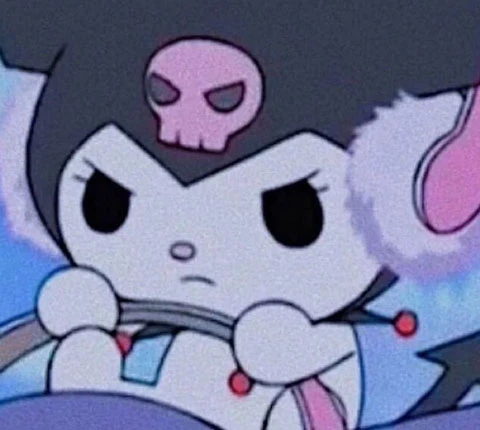 Anne
Anne- 9k
- 2
-
A Glimpse into the Traditional Dress and Makeup of Shang Dynasty China
The Shang Dynasty, which ruled over a vast area of China from roughly 1600 BCE to 1046 BCE, is known not only for its impressive dynasty achievements in bronze casting, architecture, and oracle bone script but also for its exquisite attire and makeup. Clothing and cosmetics were more than just functional items during this era; they were essential elements that reflected one's social status, class, and personal taste. In this article, we will delve into the fascinating world of Shang Dynasty fashion and beauty and learn about the various styles, materials, and colors used by ancient Chinese people to express themselves through their appearance. The Clothing of the Shang Dynasty Shang Tang, the head of the vassal state of the Xia Dynasty, led the vassal state to establish the Shang Dynasty in Bo (now Shangqiu) by winning the Battle of Mingtiao. The Shang Dynasty (about 1600 BC ~ 1046 BC) was the second dynasty in Chinese history, also known as the Yin Shang (殷商). It was the first dynasty in China to have direct written records in its own age. At that time, most of the texts were pictographic, or even just pictures. The Shang Dynasty has gone through…... Anne
Anne- 10.3k
- 2
-
History of Xia Dynasty Clothing and Makeup - Ancient Period Chinese Costume
The Xia Dynasty, believed to be the first dynasty in Chinese history, lasted from around 2070 BCE to 1600 BCE. Despite its importance, little is known about the Xia Dynasty's customs and traditions. One area that has captured the interest of historians and anthropologists is the clothing and makeup worn by the people during this period. In this article, we will take a brief look into the fascinating world of Xia Dynasty costumes and makeup, exploring their styles, materials, and cultural significance. The Clothing of the Xia Dynasty After successfully controlling the floods, Yu the Great was spontaneously supported by the people and established the Xia Dynasty. The system of succession was changed from abdication to hereditary. There were a total of fourteen generations in the Xia Dynasty, which lasted for about 471 years. This dynasty marked the formation of China's slave society, and the clothing system developed during this period, known as the "Guanfu" system, was one of the earliest forms of dress code in Chinese history. In ancient primitive times, clothing was primarily a result of aesthetic and sexual competition needs, followed by the requirement for warmth. During the periods of the Yellow Emperor, Yao, Shun, and…... Anne
Anne- 5.5k
- 1
-
The Prototype and Development of Ming Dynasty Costume
In the first year of Hongwu in the Ming Dynasty. In order to eliminate the influence of the clothing left by the Yuan Dynasty, Zhu Yuanzhang issued an edict to the whole country, requiring the removal of Hu clothing. However, it was not the emperor who could determine the style of clothing, but the general public. Zhu Yuanzhang's edict on the restoration of the clothes and the crowns did not completely return people's dress to the Tang Dynasty tradition. Even many elements of Mongolian clothing of the Yuan Dynasty were retained because they were convenient to wear on a daily basis, resulting in the formation of Ming clothing of various shapes and features. Ming Style Hanfu vs. Song Style Hanfu For the general Hanfu lover, the difference between Ming Hanfu and Song Hanfu is probably the hardest to tell. Although it is often possible to make some guesses by feeling after wearing it, it is not really easy to pick out a single piece to see. Although there was no mention in Zhu Yuanzhang's edict of restoring clothing to the style of the Song Dynasty, but the Tang Dynasty was a distant time for the people of the Ming Dynasty.…... Anne
Anne- 1.2k
- 0
-
Huaxia Dresses - The Evolution of Chinese Traditional Wear
Huaxia dresses brilliantly for thousands of years. How rich is the Chinese traditional wear? Follow the INSTITUTE FOR PLANETS to enjoy a journey through a thousand years of Chinese costumes. Huaxia Dresses - Prehistory to Shang & Zhou Period Looking back tens of thousands of years ago, human beings learned to sewn clothes with Guzhen (骨针, bone needle). Perhaps inspired by making ropes and bamboo baskets, around 7,000 B.C., Chinese ancestors began to weave fabrics with plant fibers. In order to improve the weaving efficiency, the Fanglun (纺轮, spinning wheel) was created that used pottery sheets to rotate inertial for twisted threads. There is also the Yaoji (腰机, waist machine) that is used to bind lines and make them tight and easy to knit. In that era of extremely backward productivity, it was not easy to get fabric, so the shape of clothes was relatively simple. Two narrow pieces of cloth were directly combined and then tie a straw rope, which may be the daily dress. With the continuous development of society, the function of clothing has long been more than just covering up and keeping warm, it has also been endowed with a lot of aesthetic concepts, which is…...Rose
- 1.8k
- 3
-
Detailed Introduction of Classic Ming Dynasty Costumes
Which emperor paid the most attention to clothing in ancient Chinese history? Then Zhu Yuanzhang, the emperor of the Ming Dynasty, must be on the list. After the founding of the state, Zhu Yuanzhang issued an edict on the restoration of the ancient clothes and crowns, which is about the restoration of the clothes and crowns in the Tang system and the old Chinese. And he personally participated in the improvement of the clothing system. During Zhu Yuanzhang's 31 years in office, the clothing system has been revised and supplemented many times. The clothing system is detailed in terms of fabric, style, size and color. And it regulates the clothing of people of various statuses and identities throughout the country. What's more, its implementation was guaranteed by state coercion. To be arrested for wearing the wrong clothes? This is not a joke at the beginning of the Ming Dynasty. The top-down imperial ban cannot prohibit the awakening of the people's own consciousness and the pursuit of beauty. After the middle of the Ming Dynasty, clothing became more and more luxurious, the official clothing ban was useless, and the art of clothing has shown a prosperous scene of promoting personality and…...Rose
- 4k
- 2
-
Detailed Introduction of 11 Classic Song Dynasty Woman Costumes
Unlike the noble and elegant clothes of women in the Tang Dynasty, when it comes to Song Dynasty women costumes, maybe we are thinking of a graceful and restrained and a plain and neat feeling. The Song Dynasty was the dynasty with the most prosperous literati temperament in Chinese history. Women’s clothing in the Song Dynasty not only inherited the women's clothing system in the Tang Dynasty, moreover, combined with the characteristics of the times, created a dressing mode that belongs to the Song Dynasty. Its aesthetic standard is skinny beauty with fresh and elegant. It advocates slenderness and fit, exquisite material processing, soft tone, lightness, softness, elegance, and it has a strong atmosphere of life. So what kind of clothes did the women wear in the Song Dynasty thousands of years ago? In this article, ArtMoment will introduce 11 classic Song Dynasty women costumes to you. 1-Top In the Song Dynasty, women’s clothing was basically still coat and dress shape, divided into different forms. Tops mainly have Moxiong, Shan, Ru & Ao, Pao, Beizi, Banxiu, and so on. Moxiong Moxiong (抹胸, bandeau) is the most close-fitting clothing for women in the Song Dynasty. Its function is like today’s…...Rose
- 3.9k
- 4
-
The Mamianqun: History, Construction, Features
So the Mamianqun, or 馬面裙, or horse-faced skirt, has been blowing up lately especially because of the Dior controversy—here's an in-depth dive into the history, construction, and features of the famous horse-face skirt. A BRIEF HISTORY OF THE MAMIANQUN The mamianqun or horse-faced skirt is a skirt that first originated somewhere close to the Song dynasty worn by high-class courtesans (who were like celebrities and fashion icons tbh) in the form of colorful pleated silk. It’s named this way because of its resemblance to the mamian fortress, which has stairs on either side (like the pleats) and a door in the front and back (like the skirt doors). The ‘doors’ sides of the fortress were known as the *horse faces* or mamian/馬面 because these were the faces of the fortress where the horses would pass through. It became extremely popular in the following Ming dynasty and stayed popular through the Qing dynasty through Manchurian rule—it’s been around for a long, long time! Mamianqun are more convenient for movement and offer a regal, classy aesthetic as well as a very recognizable and unique silhouette. Even Princess Diana wore one once! BASIC CONSTRUCTION OF A MAMIANQUN The Skirt Doors From the…...redsugarx
- 14.2k
- 6
-
Fashion Trends of Antique Chinese Clothing Through the Dynasties
Unlike modern clothing, which is updated so frequently, the development of antique Chinese clothing was not only accompanied by the change of dynasties, but also combined with the level of fabrics of the time. However, there is no doubt that different periods in ancient China had distinctive fashion items. 01 Shenyi in Han Dynasty In 1972, when the three-month archaeological excavation ended, the archaeologists of Tomb No. 1 of the Mawangdui Han Tomb in Changsha were still excited. During the subsequent work, they discovered a dozen pieces of well-preserved Western Han costumes, thus opening a window for later generations to peek into the aesthetics of the dress worn by ancient Chinese 2000 years ago. The relics of the tomb that the archaeologists cleaned were from the tomb of Xin Zhui, the wife of Li Cang, the prime minister of Changsha in the early Western Han Dynasty. Based on archaeological and textual records, we know that there were two main types of clothing for the ancient Chinese during the Qin and Han dynasties. Type Yichang (衣裳), in which the clothing of the upper body and the lower body were not connected; Type Shenyi (深衣) in which the upper garment and…...secannon
- 1.2k
- 2
-
Ancient Chinese Women’s Hanfu Attire Illustrations
The illustrations in this series of articles are from the work of Chinese illustrator Xiao Ling Chun (小鈴春) Xiao Ling Chun combines the features of Chinese historical relics and shows the characteristics of women's hanfu clothing in different periods of ancient China through illustrations. Han Dynasty The Han Dynasty was a great unification dynasty after the Qin Dynasty, divided into the Western Han and Eastern Han periods, with a total of 29 emperors and reigning for 405 years. The Han Dynasty was the first golden period in the history of China's development, and the Han Chinese were named during this period. Although the names of the dynasties have changed since the Han Dynasty, the status of the Han as the main ethnic group in China has remained unchanged. Western Han (202 BC – 8 AD) Xin dynasty (9–23 AD) Eastern Han (25–220 AD) Wei, Jin, the Southern and Northern Dynasties Wei, Jin, the Southern and Northern Dynasties were the most frequent period of regime change in Chinese history, mainly divided into the Three Kingdoms (Cao Wei, Shu Han, and Eastern Wu), Western Jin, Eastern Jin, Sixteen Kingdoms, Northern and Southern dynasties. The development of Chinese culture during this…...Stephanie
- 818
- 4


